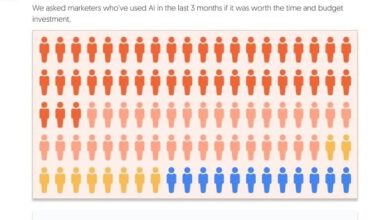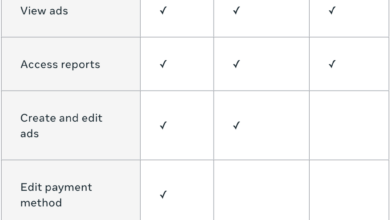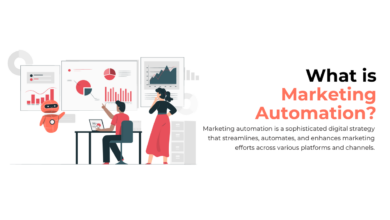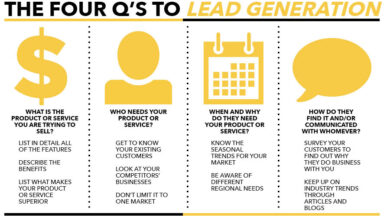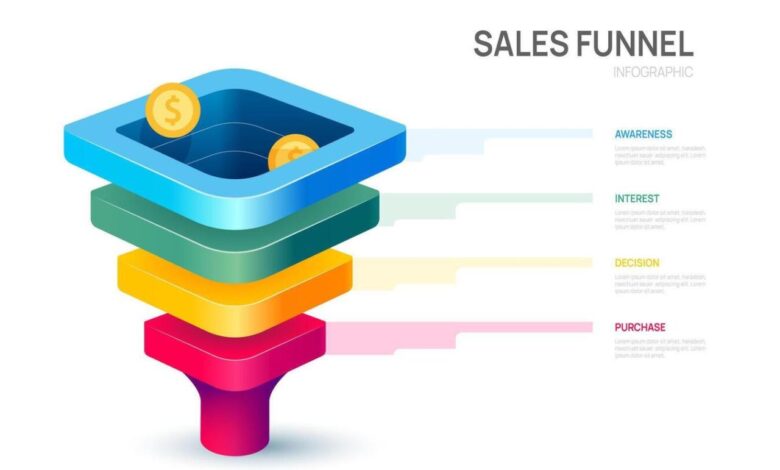
How to Build the Perfect 4-Step Advertising Funnel
How to build the perfect 4 step advertising funnel? This guide breaks down the crucial steps to create a high-converting marketing strategy. From initial awareness to final action, we’ll explore each stage, providing actionable strategies and examples. We’ll delve into content strategies, social media tactics, persuasive language, and key performance indicators to optimize your funnel for maximum results.
Ready to unlock the secrets to building a truly effective advertising funnel?
This comprehensive guide will walk you through the entire process, enabling you to craft a 4-step funnel that effectively attracts, engages, and converts your target audience. We’ll cover the critical elements of each stage, including content creation, engagement strategies, and persuasive techniques. Get ready to transform your marketing efforts and achieve outstanding results.
Defining the Perfect 4-Step Funnel
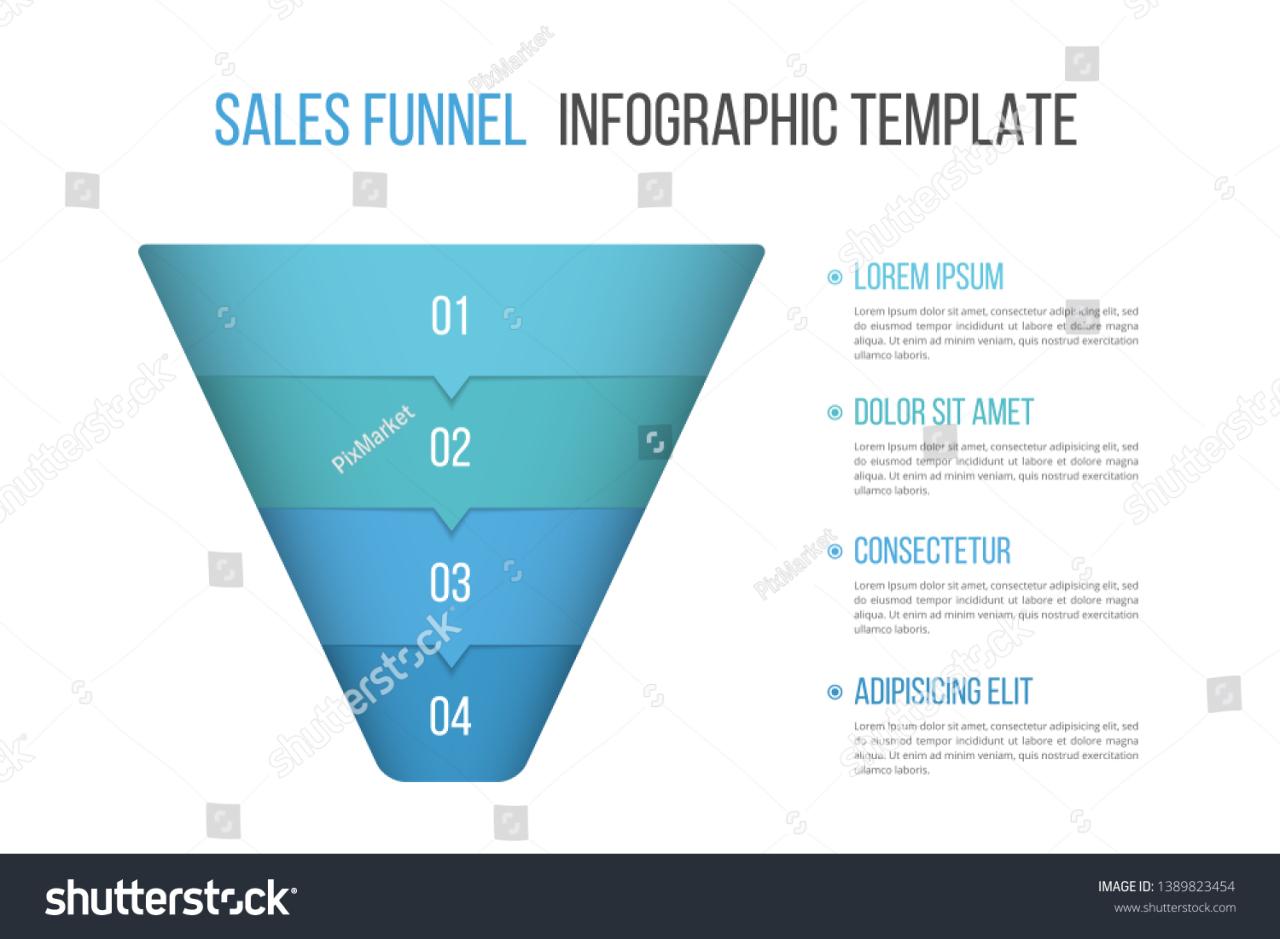
A 4-step advertising funnel is a structured approach to guiding potential customers through a series of stages, from initial awareness to final conversion. This process effectively targets specific actions and expectations at each stage, maximizing the chances of turning prospects into paying customers. It’s a powerful tool for optimizing marketing efforts and driving measurable results.A well-designed 4-step funnel strategically leverages each stage to build customer interest, address their needs, and ultimately drive conversions.
This focused approach fosters a more engaging experience for potential customers, ultimately resulting in a more profitable customer acquisition strategy.
Core Components of a 4-Step Funnel
A 4-step funnel comprises four distinct stages, each designed to move the prospect closer to a desired action. Each stage has specific objectives and actions associated with it. The effectiveness of the entire process relies on the clear understanding and implementation of each stage.
Crafting a killer 4-step advertising funnel is all about targeted messaging and smooth transitions. Understanding how to leverage Facebook Dynamic Ads is key for this process. Check out facebook dynamic ads 101 to learn how these ads can personalize your campaigns, ensuring you’re reaching the right people at the right stage of the funnel. Ultimately, the perfect funnel depends on a detailed understanding of your audience and tailored ad copy to guide them through each stage.
Stages of a 4-Step Advertising Funnel
The following table Artikels the four crucial stages of a 4-step advertising funnel, detailing the action, target audience, and expected outcome for each stage.
| Stage | Action | Target Audience | Expected Outcome |
|---|---|---|---|
| Awareness | Attract potential customers through engaging content, social media posts, or targeted ads. | Individuals who are not yet aware of the product or service. Broad audience, encompassing people who might have a need for the product or service but aren’t actively searching for it. | Increase brand visibility and generate interest in the product or service. Generating leads and building a database of potential customers. The goal is to make people aware of your company. |
| Interest | Provide valuable content that educates and engages the audience. Examples include blog posts, webinars, or downloadable resources. Offer a way for them to engage with the content. | Individuals who have shown interest in the product or service, indicated by engagement with initial content or ads. | Drive engagement and build trust. Converting awareness into genuine interest. Generating leads through calls to action. |
| Decision | Offer a compelling reason for the prospect to take the next step, such as a limited-time offer, a free trial, or a demonstration. Make it clear and simple. | Individuals who are actively considering purchasing the product or service. | Encourage a purchase decision. The goal is to convince them to make a commitment. Driving conversions through clear calls to action. |
| Action | Provide a seamless and efficient purchasing process. Ensure smooth and hassle-free checkout experience. Provide excellent customer support. | Individuals who are ready to make a purchase. | Complete the purchase and achieve a sale. The ultimate goal is to turn prospects into paying customers. |
Stage 1: Awareness
Building a strong foundation for your advertising funnel begins with creating awareness. This stage is crucial for introducing your product or service to a wider audience and sparking initial interest. Effective awareness strategies will lead to higher engagement rates and ultimately, more conversions down the funnel. The goal here is not just to get noticed, but to pique curiosity and establish your brand as a credible solution to a customer’s problem.
Effective Awareness Generation Methods
Generating awareness involves a multi-faceted approach. Leveraging various channels and content types allows you to reach a diverse audience and effectively communicate your value proposition. This includes utilizing content marketing, social media, and targeted advertising. The key is to identify your ideal customer persona and tailor your approach to their specific interests and needs.
Content Strategies for Top-of-Funnel Content
Top-of-funnel content serves as the initial hook, attracting potential customers and encouraging them to learn more. This content should be educational and valuable, providing insights and solutions related to your industry. Avoid overly promotional language; instead, focus on providing genuine value to the reader. Examples include blog posts, articles, infographics, and videos that address common pain points or offer helpful advice.
This strategy positions your brand as a trusted resource, fostering a positive perception and generating organic engagement.
Utilizing Social Media Platforms for Awareness
Social media is a powerful tool for building brand awareness. Choose platforms where your target audience is most active. Regular posting of engaging content, including visuals, videos, and interactive posts, can significantly increase your reach and visibility. Social media allows for direct interaction with potential customers, fostering a sense of community and encouraging two-way communication. Engaging with relevant conversations and influencers can also amplify your message and broaden your reach.
Effective Call-to-Actions for the Awareness Stage
Call-to-actions (CTAs) in the awareness stage should encourage further engagement without being overly sales-focused. Encourage interaction by asking questions, inviting participation in polls, or suggesting further reading. A well-crafted CTA in this stage guides the user to the next stage of the funnel without pressuring them into a purchase. Examples include “Learn More,” “Download the Guide,” “Join the Community,” or “Watch the Webinar.” The language should be clear, concise, and persuasive.
Key Metrics for Evaluating Awareness Stage Success
Measuring the success of the awareness stage is crucial for refining your strategy. Key metrics include website traffic, social media engagement (likes, shares, comments), lead generation, and brand mentions. Monitoring these metrics allows for adjustments to content strategy and campaign optimization, ensuring that the efforts are yielding the desired results.
Crafting a killer 4-step advertising funnel is all about understanding your audience and guiding them smoothly through the process. Knowing what Google actually “sees” in your meta tags is crucial for search engine optimization (SEO), which directly impacts how your ads show up in searches. For example, diving deep into google meta tags for seo what does google actually understand will help you tailor your funnel to maximize click-through rates and conversions.
This, in turn, refines your ad copy and landing pages, ultimately boosting your entire advertising funnel’s effectiveness.
Example Platforms, Content Types, and Examples
| Platform | Content Type | Example |
|---|---|---|
| Industry Articles | “Top 5 Trends Shaping the Future of Marketing” | |
| Visually Engaging Posts | Infographic highlighting benefits of using a specific product. | |
| Short-Form Articles/Tips | “3 Quick Tips to Boost Your Productivity Today” | |
| YouTube | Video Tutorials/Explainer Videos | How-to video showcasing product features |
Stage 2: Interest
Turning initial awareness into genuine interest is crucial for moving potential customers down the funnel. This stage focuses on demonstrating the value proposition of your product or service and building a connection with your audience beyond simple recognition. A compelling narrative and a clear understanding of your target audience’s needs are essential for sparking their interest.
Strategies for Capturing User Interest
Building interest requires more than just showcasing your product. It necessitates demonstrating its value and solving a problem for the user. This involves providing a compelling reason for them to engage further and learn more. This can be achieved through various content formats, targeted messaging, and a focus on establishing trust and credibility.
Importance of Building Trust and Credibility
Trust is paramount in converting awareness into interest. Potential customers are more likely to engage with your brand if they perceive it as trustworthy and credible. This can be achieved through showcasing customer testimonials, case studies, expert endorsements, and transparent communication about your company’s values and mission. Highlighting your expertise and experience in the field further strengthens your credibility.
Valuable Resources and Content to Pique Interest
Providing valuable resources and content is key to generating interest. These resources should address the specific pain points and needs of your target audience, providing actionable insights and solutions. Think educational articles, helpful guides, downloadable templates, and exclusive webinars. Consider creating content that goes beyond just promoting your product; aim to educate and inform.
- Educational Articles: These provide in-depth information on topics related to your product or service, positioning you as a thought leader. Articles should be well-researched, informative, and engaging, using clear language and strong visuals. For example, an article about the benefits of sustainable packaging for a company selling eco-friendly products.
- Case Studies: Showcase how your product or service has solved problems for other customers. Use real-life examples to demonstrate the tangible value and positive outcomes. For example, a case study demonstrating how a software solution increased productivity for a specific company.
- Guides and Templates: Offer downloadable guides or templates that help users solve a specific problem or achieve a desired outcome. This demonstrates your value and provides a practical application of your product or service. For example, a guide on creating a social media marketing strategy for small businesses.
Using Compelling Visuals and Storytelling
Visual elements and storytelling are powerful tools for capturing and maintaining interest. High-quality images, videos, and infographics can make your content more engaging and memorable. Storytelling connects with potential customers on an emotional level, making your brand more relatable and memorable. Emphasize human-centric elements in your visuals to create an emotional connection with the audience. A compelling video demonstrating the impact of a product on a customer’s life can be extremely effective.
Best Practices for Converting Awareness into Interest
Converting awareness into interest involves a multi-faceted approach. Focus on clear and concise messaging that highlights the benefits of your product or service. Utilize a variety of engaging content formats to reach a broader audience and demonstrate value. Continuously analyze and adapt your approach based on user feedback and engagement metrics. Consider implementing A/B testing to optimize your messaging and content for maximum impact.
Formats for Interest-Building Content
| Content Format | Description | Example |
|---|---|---|
| Articles | In-depth information on relevant topics. | Blog post about the latest trends in sustainable fashion. |
| Videos | Visual explanations and demonstrations. | Explainer video showcasing the features of a new software product. |
| Infographics | Visual representations of data and information. | Infographic summarizing the key benefits of using renewable energy. |
| Webinars | Interactive online seminars. | Webinar on improving customer service techniques. |
| Ebooks | Comprehensive guides on specific topics. | Ebook on building a successful online business. |
Stage 3: Decision
Turning interest into action is crucial for any successful advertising funnel. This stage focuses on convincing potential customers that your product or service is the best solution for their needs, ultimately driving them towards a purchase. It’s about addressing their hesitations and presenting compelling reasons why they should choose you.This stage involves crafting a powerful call to action that encourages the user to take the desired action.
This might include providing a limited-time offer, highlighting testimonials, or strategically employing persuasive language to encourage conversions. Successfully navigating this stage often relies on a deep understanding of the customer’s perspective and addressing their concerns proactively.
Persuasive Language Techniques for Conversion, How to build the perfect 4 step advertising funnel
Persuasive language is a powerful tool in guiding potential customers towards a purchase decision. Understanding the techniques behind persuasive language is crucial for effectively influencing buyer behavior.
- Scarcity: Creating a sense of urgency by highlighting limited availability or time-sensitive offers can incentivize immediate action. For instance, a limited-stock promotion or a “while supplies last” message can motivate buyers to make a purchase quickly.
- Social Proof: Testimonials and reviews from satisfied customers act as powerful social proof, demonstrating the value and desirability of your product or service. Highlighting positive feedback from similar users builds trust and encourages conversions.
- Authority: Leveraging the expertise and credibility of trusted sources can establish your product or service as the superior option. This could involve citing industry awards, certifications, or testimonials from well-regarded figures.
- Reciprocity: Offering something valuable to potential customers, like a free sample, discount, or bonus, creates a sense of obligation and encourages a return action, such as a purchase.
- Emotional Appeals: Connecting with the customer on an emotional level can create a stronger bond and influence their purchasing decision. Stories that resonate with the customer’s desires, needs, or aspirations can make a significant impact.
Handling Objections and Concerns
Addressing customer concerns proactively is crucial for building trust and confidence. Anticipating potential objections and providing satisfactory answers can significantly increase conversions.
- Proactive Addressing: Anticipate common objections and address them directly in your marketing materials. This could involve a FAQ section on your website or dedicated responses to frequently asked questions in your marketing communications.
- Addressing Concerns Directly: Respond to customer concerns promptly and professionally. Providing detailed information and clear explanations can help ease their concerns and increase their confidence in your product or service.
- Building Trust: Building trust and transparency is crucial in addressing concerns. Provide clear and honest answers to potential questions, demonstrating your commitment to customer satisfaction.
Social Proof and Testimonials
Social proof is critical in building trust and influencing purchasing decisions. Positive testimonials and reviews demonstrate the value and reliability of your product or service.
- Showcase Testimonials: Highlight positive testimonials from satisfied customers on your website, product pages, and marketing materials. Visual representations, such as short videos or written quotes, can make a significant impact.
- Encourage Reviews: Encourage customers to leave reviews and testimonials by providing easy review mechanisms on your website or platform. Make it clear and straightforward for customers to share their feedback.
- Quantify Results: Quantify the impact of your product or service using data-driven metrics, like before-and-after comparisons, or success stories. Providing hard evidence builds trust and increases conversions.
Limited-Time Offers and Discounts
Creating a sense of urgency and exclusivity can be a powerful motivator. Limited-time offers and discounts encourage immediate action and boost conversions.
- Limited-Time Offers: Highlighting limited-time offers can create a sense of urgency and encourage immediate action. Clearly communicate the duration of the offer to maximize its impact.
- Strategic Discounts: Implementing strategic discounts can incentivize purchases and increase conversions. Consider the value proposition and offer discounts that are perceived as worthwhile by potential customers.
- Bundle Deals: Offering bundle deals or packages can increase the perceived value of your product or service and incentivize purchases.
Comparison of Persuasive Language Techniques
| Technique | Description | Example |
|---|---|---|
| Scarcity | Creates urgency by highlighting limited availability. | “Only 10 left in stock!” |
| Social Proof | Leverages positive feedback from others. | “97% of users recommend this product.” |
| Authority | Emphasizes expertise and credibility. | “Recommended by top doctors and scientists.” |
| Reciprocity | Offers something valuable to encourage return action. | “Free shipping on orders over $50.” |
| Emotional Appeals | Connects with customers on an emotional level. | “Experience the joy of a healthier lifestyle with our product.” |
Stage 4: Action
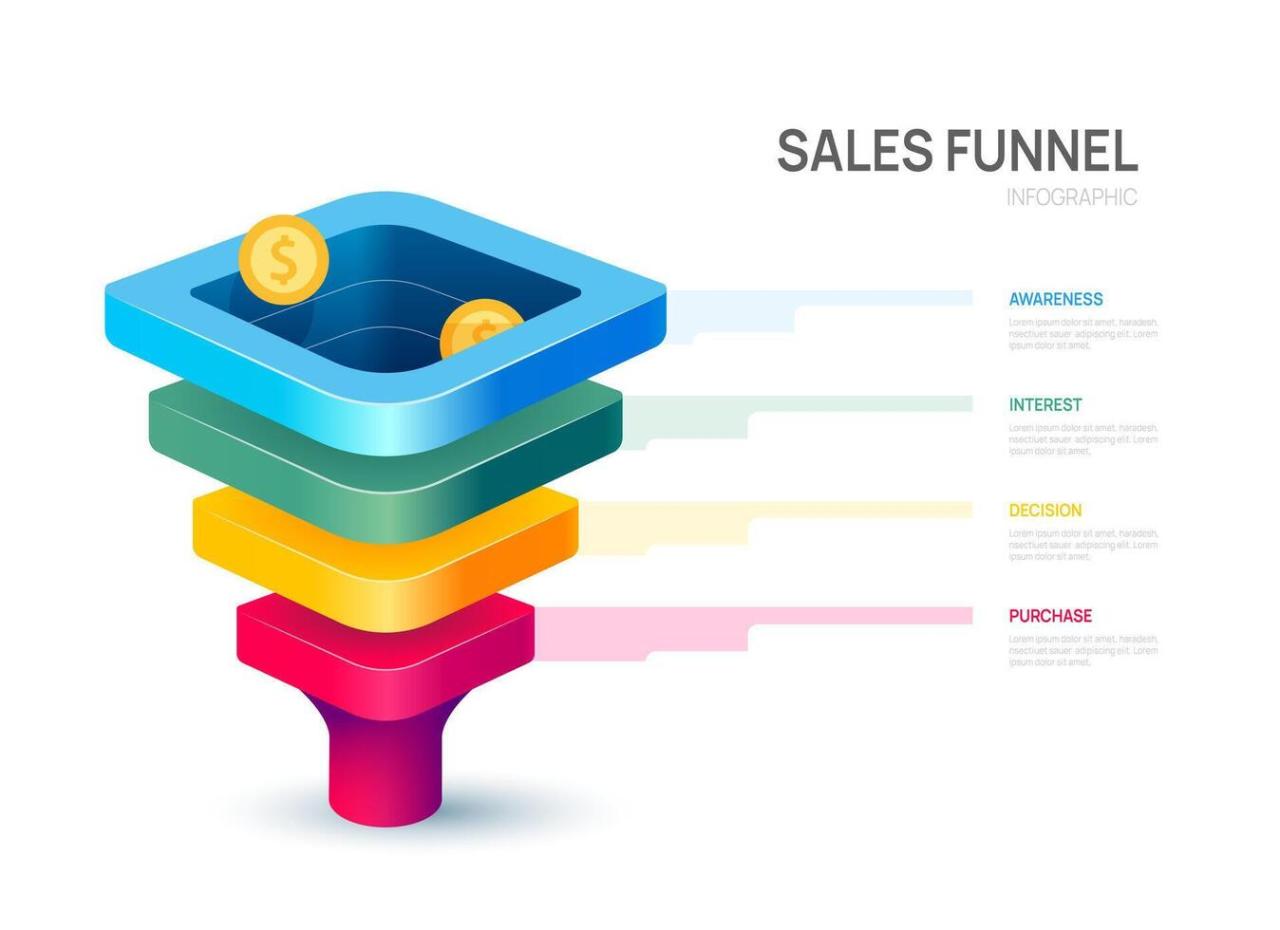
Turning interest into action is the final, crucial step in your advertising funnel. This stage focuses on driving potential customers towards a desired outcome, whether it’s making a purchase, signing up for a newsletter, or requesting a consultation. A strong action stage ensures your marketing efforts convert visitors into paying customers.
Strategies for Encouraging Immediate Action
Crafting a compelling call to action (CTA) is paramount in the action stage. Effective CTAs motivate users to take the desired action without hesitation. This involves understanding your target audience and tailoring the language to resonate with their needs and aspirations. Beyond simple text, incorporating urgency through limited-time offers or exclusive discounts can further incentivize immediate action.
Use high-quality visuals to create a compelling visual narrative and a strong impression.
Crafting a killer 4-step advertising funnel involves more than just catchy headlines. A crucial element is strategically placing exit intent popups. These popups, designed to appear as a user is about to leave your website, can be a game-changer in converting those almost-gone visitors into leads. Learn how to use exit intent popups effectively to maximize engagement and ultimately, boost conversions within your funnel.
Understanding their power is key to optimizing your entire funnel strategy.
Clear and Concise Calls-to-Action
Clear and concise calls-to-action (CTAs) are essential for guiding users towards the desired action. They should be easily identifiable, using strong verbs and action-oriented language. Avoid jargon or complex phrasing that might confuse or deter potential customers. Effective CTAs use concise language, focus on benefits for the user, and clearly state the desired action. A well-crafted CTA will increase conversion rates.
High-Converting Landing Pages
High-converting landing pages are designed to optimize the user experience and guide visitors to take the desired action. They typically feature a single, focused offer and a clear call-to-action. Elements like strong headlines, compelling visuals, and concise descriptions contribute to a seamless user journey. These landing pages are optimized for specific s and focus on a singular goal.
For example, a landing page dedicated to a webinar signup should only include information relevant to that event.
Payment Methods and Checkout Processes
A seamless checkout process is critical for converting visitors into customers. Offering multiple secure payment options is essential for catering to diverse preferences. The checkout process should be intuitive and easy to navigate, minimizing friction points that might deter users from completing the purchase. Ensure the checkout process is secure and transparent to build trust. A simplified checkout process significantly reduces cart abandonment rates.
Follow-up Emails and Post-Purchase Support
Post-purchase engagement is vital for fostering customer loyalty and driving repeat business. Follow-up emails can provide valuable information about the product or service, answer customer queries, and encourage further engagement. This is an opportunity to build relationships and provide outstanding customer support. Prompt responses to inquiries and proactive communication after the purchase help establish trust and satisfaction.
Call-to-Action Button Styles and Impact
| Button Style | Impact |
|---|---|
| Bright, contrasting colors (e.g., red, orange) | High visibility, immediate attention, often associated with urgency. |
| Subtle, yet noticeable colors (e.g., dark blue, green) | Creates a sense of trust and reliability, good for a more considered purchase. |
| Button with a clear shape and Artikel | Improves readability and makes the button stand out visually. |
| Button with an easily identifiable text | Clear instruction, easily understood by users. |
| Button with an animation (e.g., hover effect) | Creates an interactive experience, increases engagement, and highlights the button’s function. |
Measuring and Optimizing the Funnel: How To Build The Perfect 4 Step Advertising Funnel
The success of any advertising campaign hinges on its ability to convert leads into customers. A robust 4-step funnel provides a clear pathway, but without diligent measurement and optimization, it’s just a roadmap to nowhere. This crucial stage ensures that your efforts are yielding the desired results and that your marketing budget is being allocated effectively.Once you’ve established your funnel, the real work begins.
Tracking key performance indicators (KPIs) is paramount to understanding what’s working and what needs adjusting. Analyzing this data allows you to identify bottlenecks and opportunities for improvement, ultimately leading to a more effective and profitable campaign.
Key Performance Indicators (KPIs) for Funnel Performance
Tracking the progress of your funnel requires a keen eye on specific metrics. These KPIs offer crucial insights into the effectiveness of each stage and overall campaign performance. Understanding the nuances of each metric allows for informed decision-making.
| KPI | Description | Importance |
|---|---|---|
| Conversion Rate (Awareness to Interest, Interest to Decision, Decision to Action) | Percentage of users who move from one stage to the next. | Indicates the effectiveness of each stage and the overall efficiency of the funnel. |
| Click-Through Rate (CTR) | Percentage of users who click on a link or ad. | Measures the effectiveness of ad copy, targeting, and landing page design. |
| Bounce Rate | Percentage of visitors who leave a webpage without interacting with it. | Highlights potential issues with landing pages, ad copy, or user experience. |
| Cost per Acquisition (CPA) | Cost incurred to acquire a customer. | Essential for assessing the profitability of the campaign. |
| Customer Lifetime Value (CLTV) | Projected revenue a customer is expected to generate throughout their relationship with the company. | Crucial for evaluating the long-term ROI of your campaign and for setting acquisition budgets. |
| Average Order Value (AOV) | Average amount spent per customer on a purchase. | Helps in determining the effectiveness of upselling and cross-selling strategies. |
Analyzing Data for Improvement
A simple spreadsheet isn’t enough. Utilizing data visualization tools, such as Google Data Studio, allows you to see trends and patterns in your data more easily. For instance, you can observe how different ad copy variations perform over time, allowing you to quickly identify what resonates best with your target audience. The data you collect will not only tell you what’s happening, but also
why* it’s happening.
A/B Testing Strategies
A/B testing is an essential tool for optimizing your funnel. It involves creating variations of elements within your funnel, such as headlines, calls to action, or images, and then comparing their performance to determine which variation converts better. A common A/B test might involve two different headlines, both leading to the same landing page. The headline that results in a higher conversion rate is then implemented across the funnel.
Optimizing the Funnel Based on Data Analysis
The analysis of your KPIs will reveal specific areas needing attention. For example, a low conversion rate from the awareness stage to the interest stage might indicate a problem with the initial ad copy or landing page design. Once the problem is identified, you can implement changes, such as tweaking your ad copy to be more engaging or improving the design of your landing page.
Continuous Monitoring and Adjustment
The digital landscape is constantly evolving, and your advertising funnel should adapt accordingly. Regular monitoring of KPIs is essential to identify any shifts in user behavior or market trends. If a particular element of your funnel isn’t performing as expected, you need to be agile and adjust it accordingly. For instance, a recent algorithm update could cause a drop in organic traffic, requiring you to adjust your content strategy to align with the new changes.
Last Word
In conclusion, building a successful 4-step advertising funnel requires a meticulous approach, understanding your audience, and constant optimization. By mastering each stage, from awareness to action, you can create a powerful marketing machine that drives conversions and grows your business. Remember, the key is to understand your target audience and tailor your strategies to resonate with their needs and desires.
Consistent monitoring and adaptation are essential to keep your funnel performing at its peak. Let’s dive into the details!
